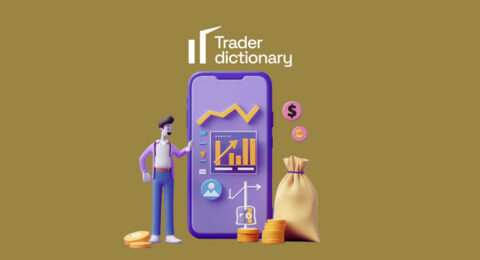Hello dear investors! Today, in the article “Forex Trading Time: Golden Tips for Investors,” we will explore together the secrets and great tips to help you maximize your Forex trading time. This is not only an interesting topic but also extremely important, helping to improve your investment efficiency. Whether you’re just starting out or have extensive experience, the information in this article will certainly be a source of inspiration and valuable knowledge, helping you make accurate and effective decisions in the dynamic Forex market. Let’s start this journey of discovery!
What is Forex Trading Time?
Did you know, Forex trading time is extremely important. It’s the time frame in which investors like us can make transactions in the foreign exchange market. This market operates 24/5, meaning 24 hours a day from Monday to Friday. And here’s the interesting part: Each region of the world has different trading hours.
For example, when trading, I often monitor the London market – it opens from 8 am to 5 pm GMT. That’s when the market is most active, with huge trading volumes. There are also markets like New York, Tokyo, and Sydney, each opening and closing at different times of the day.
Why is it important? Because the time you choose to trade can greatly affect your investment results. For instance, during overlapping trading sessions, like London and New York, the market is extremely busy, meaning higher profit opportunities but also greater risks. That’s when I often emphasize to new investors: Consider carefully!
I often tell people that understanding Forex trading time is like having an alarm clock in your head. You need to know when to wake up and when to rest. Understanding this, you will go a long way on the path to becoming a successful Forex investor.
Does Daylight Saving Time Affect Forex Trading Hours?
Dear friends, I know many of you wonder whether daylight saving time affects Forex trading hours. The answer is yes, and the impact is not small! When countries apply daylight saving time (DST), Forex trading hours change depending on each country’s time zone. I remember, every time daylight saving starts or ends, I have to adjust my trading schedule accordingly.
For example, when the US and Europe switch to daylight saving time, the opening and closing hours of major exchanges like New York and London change. This means that the overlapping times between trading sessions also change, affecting trading volume and price fluctuations in the market.
As I mentioned, understanding these changes is very important. It affects your trading strategy, especially if you like to trade during overlapping sessions. Pay attention to announcements from the exchanges and adjust your schedule accordingly. I always emphasize, a smart trader is one who is always updated and flexible in all situations.
Why Does the Forex Market Operate 24 Hours?
Have you ever wondered why the Forex market operates continuously 24 hours a day? This is what makes Forex special and attractive to us, investors. The main reason is the distribution of major financial centers around the world – from Sydney, Tokyo, London, to New York. Each of these centers operates in its own time zone, creating a continuous, non-stop cycle.
This means that at any time of the day, there is at least one financial center open. When the Tokyo market closes, London opens; and when London ends, New York begins. This creates a continuous trading environment, allowing investors like us to participate in the market at any time.
I feel, this continuity brings great benefits. It not only enhances liquidity and trading opportunities but also allows us to react quickly to any economic news or important events happening around the world. For investors, this means that we can seize opportunities and manage risks more effectively.
When Does the Forex Market Open?
The Forex market, famous for operating 24 hours a day, but not every day of the week is the same. To be clearer, the market opens at the beginning of the week and closes at the end of the week. Specifically, Forex opens on Sunday night GMT (early Monday morning Vietnam time) and closes on Friday night GMT (early Saturday morning Vietnam time).
Throughout the week, the market goes through three main trading sessions: Asia, Europe, and North America. Each session has specific opening and closing times, based on the operating hours of the main financial centers in Tokyo, London, and New York.
The Asian session starts around 11 pm GMT Sunday, with Tokyo as the main center.
The European session starts around 7 am GMT, with London as the focal point.
The North American session starts around 1 pm GMT, focusing on the New York market.
It’s important to remember that these times can change depending on the summer or winter season. The overlap between sessions brings excitement and high trading opportunities, especially during the overlapping times of Europe and North America. Understanding these times will help you determine an effective trading strategy and seize the best opportunities during the Forex market’s working week.
Forex Trading Volume
The trading volume in the Forex market is really an important indicator for investors like us. It’s not just the amount of money traded each day, but also reflects the activity and liquidity of the market. High trading volume is often associated with large fluctuations and high profit opportunities, but also with greater risks.
One thing I want to share is that in overlapping trading sessions, like London and New York, trading volume often spikes. This is when price volatility and liquidity reach their peak, creating great opportunities for investors to make quick and effective buy and sell decisions.
However, trading volume can also fluctuate strongly based on important economic events or political news. That’s when the market can become extremely unpredictable. I always emphasize to investors that tracking and analyzing trading volume is an indispensable part of developing a trading strategy.
Mastering information about trading volume helps us better understand market dynamics, thereby making smart and timely investment decisions. This is one of the skills needed to become a successful Forex investor.
When is the Best Time to Trade Forex and Why?
Ah, the question about the best time to trade Forex, it’s always a hot topic in our investor community. There’s no fixed answer for everyone, but there are certain times of the day when trading opportunities are usually better.
Personally, I find that the overlap between trading sessions is the most appropriate time. For example, when the London session overlaps with the New York session, from about 1 pm to 4 pm GMT. This is when the market has high liquidity and strong volatility, offering great opportunities for short-term trades.
But why is that? When two major sessions overlap, trading volume skyrockets, creating more trading opportunities and significant price fluctuations. For investors, this means you can take advantage of the volatility to make a profit. However, don’t forget that with great opportunities come high risks.
I often advise beginners to observe and learn from these sessions before making decisions. And remember, nothing is certain in the Forex market – flexibility and readiness to adapt are the keys to success!
Which Holidays Affect the Forex Market?
Speaking of holidays affecting the Forex market, there are quite a few. I find that major holidays, especially national holidays of major economies like the US, UK, or Japan, often have a significant impact. The markets may close or operate with much lower trading volumes on these days.
A typical example is the US Independence Day on July 4th, or Thanksgiving Day, which usually reduces market liquidity and increases volatility. Similarly, the Christmas and New Year holidays also often see a reduction in trading volume.
It’s important to note that on these days, the market may react more strongly to news or economic events due to low trading volume. This can lead to larger than normal price fluctuations, something every investor needs to be wary of.
In summary, holidays are times when investors need to pay special attention to their trading strategies. I often advise that on these days, consider keeping trades low or closely monitor the market to react timely to any fluctuations.
Why Are the Opening and Closing Times of the Forex Market Important?
The opening and closing times of the Forex market are really important. This not only affects liquidity but also affects trading opportunities and price movements. When a major market opens, like London or New York, a large number of transactions are made, increasing liquidity and profit opportunities.
I want to say that understanding the opening and closing times helps investors determine the best time to trade. For example, I often pay attention to the opening times of London and New York because these are two major financial centers, and the times they overlap are usually when the market is most active. This creates high price volatility, opening opportunities for short-term trades.
Additionally, tracking closing times is also important. When a market is about to close, there is often a change in prices and liquidity, which can affect your open positions. Therefore, choosing the time to enter and exit the market needs to be carefully considered to maximize opportunities and limit risks.
Understanding Gaps in Forex Trading
Gaps in Forex trading are an interesting phenomenon that I often pay attention to. A “gap” occurs when the opening price is higher or lower than the closing price of the previous trading day, creating a gap on the price chart. Gaps often appear after weekends, holidays, or when important economic news is announced.
So why are gaps important? They are often seen as a sign of strong changes in market sentiment. An upward gap indicates strong optimism, while a downward gap reflects pessimism. But, I want to emphasize, not all gaps are the same.
There are three main types of gaps: common, breakaway, and exhaustion. Common gaps are not very significant and are often filled quickly. Breakaway gaps appear at the start of a new trend, while exhaustion gaps appear at the end of a trend and signal a reversal.
As an investor, recognizing and understanding these types of gaps can help you identify opportunities and risks in trading. I often use them to assess market momentum and plan my trades more cautiously.
Conclusion
From understanding the trading sessions, to the opening and closing times of the market, to analyzing the impact of holidays and understanding gaps, each element plays an important role in shaping your investment strategy. Remember, knowledge is always the key to success in the Forex market. I wish you successful trading and encourage you to continue following our blog for more knowledge and useful tips!








